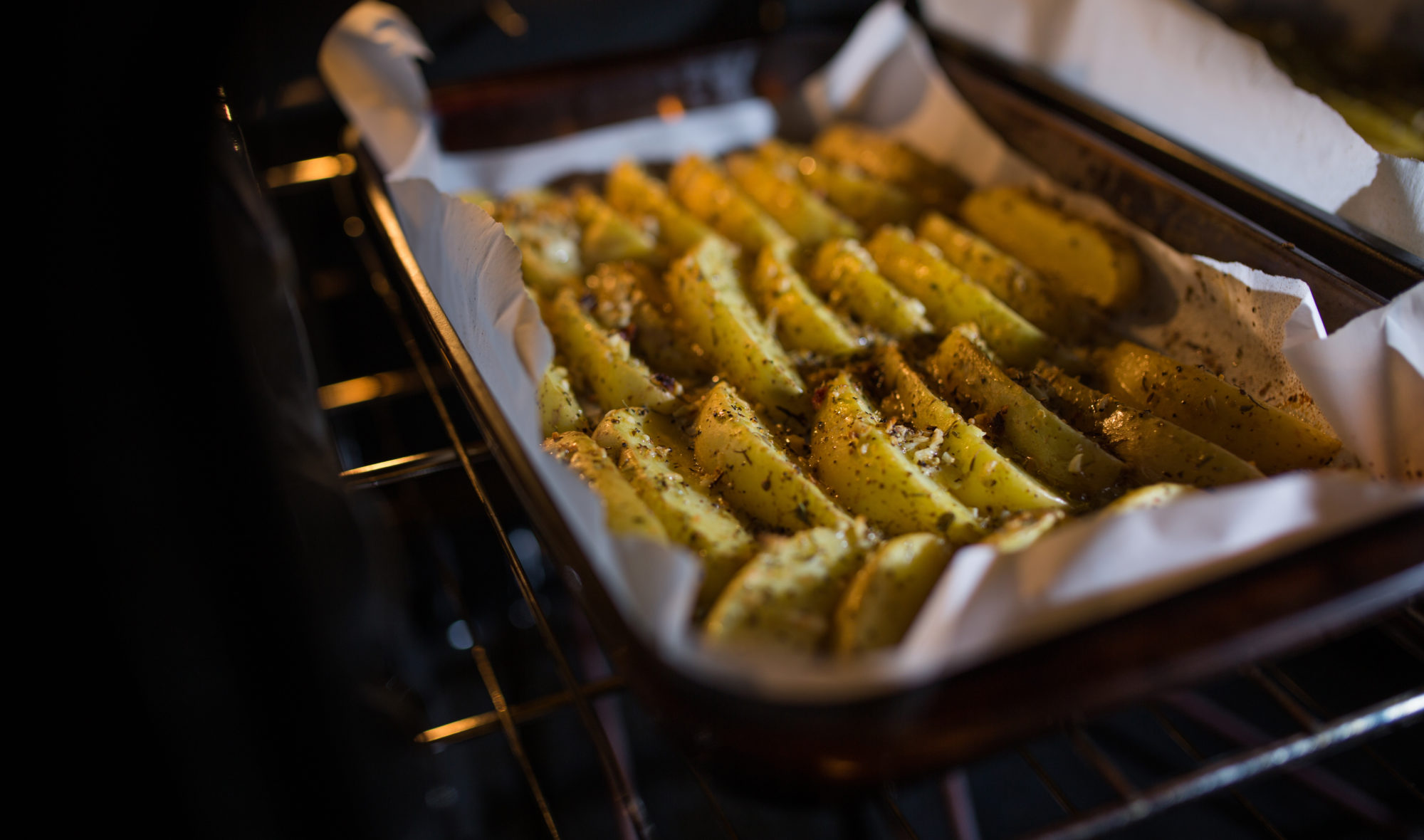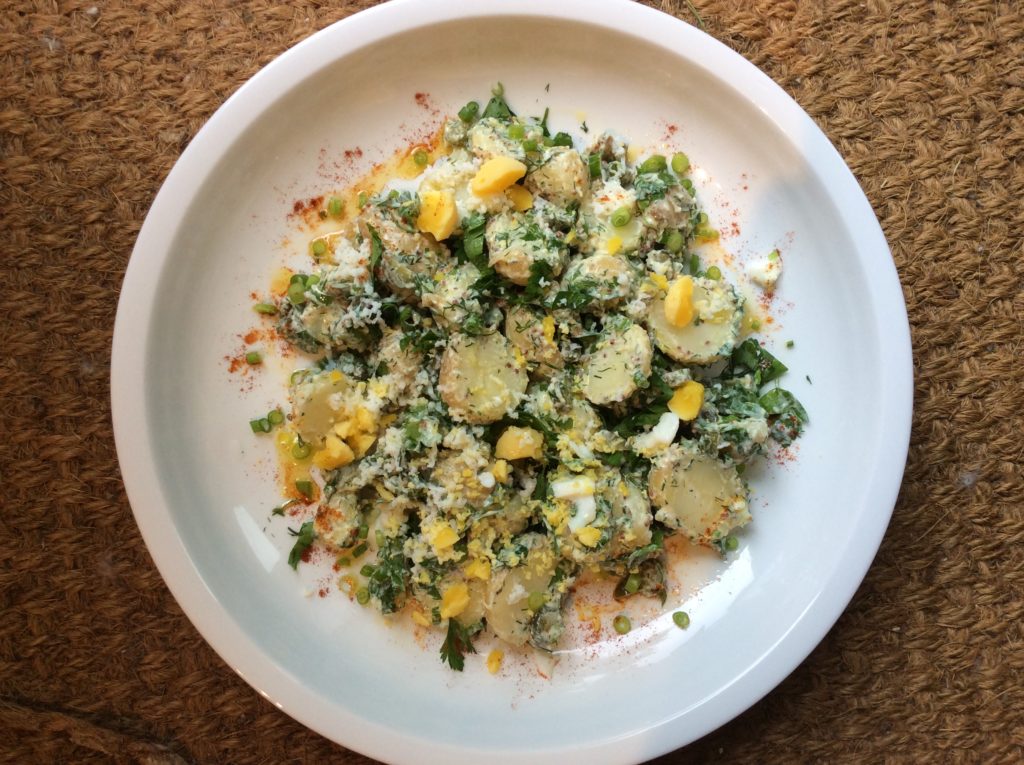
💥 Lowest price possible: on the Nutrition Coach Starter Package. Limited # left.

>Potatoes are tubers. They are one of the most important food crops around the world. Russet potatoes, white potatoes, and yellow potatoes are commonly enjoyed in North America, though there are thousands of varieties grown worldwide. Potatoes are a good source of slow-digesting carbohydrates: they can keep you full for a long time. Plus they offer vitamin B6, potassium, copper, vitamin C, manganese, phosphorus, niacin, dietary fiber, and pantothenic acid, not to mention a host of other beneficial phytochemicals. Store potatoes in a cool, dark, dry place. Remove deep eyes and any green bits before eating, and cook them fully before eating, either by baking, roasting, boiling or according to your favorite recipe.
Potatoes are tubers from the Solanaceae family. They are grown in over 149 countries and considered the fourth most important food crop in the world (behind wheat, maize, and rice).
Commercial potatoes originated thousands of years ago in South America and are now a dietary staple for over one billion people. Various cultures have relied on potatoes as their number one food source.
There are about 4,000 known varieties of potatoes (with about 3,000 in the Andes alone). In the US, you can probably find about 100 different varieties for sale across the country.
In North America, russet potatoes are commonly eaten as French fries, but white potatoes and yellow potatoes are also standard varieties. Baby potatoes, fingerling potatoes, or colored potatoes (red or purple) are enjoyed as somewhat more “gourmet” options.
Standard potato varieties (russet, red, yellow, or white) are usually oblong shaped. They range in size but one medium potato is typically about the size of your fist.
Potato color changes by variety: for example, russets are brown, while other types are named after their coloring (red, yellow, white, etc.)
A half-cup of potatoes, boiled (skin-on) contains approximately 68 calories, 1.5g of protein, 0.01g of fat, 15.7g of carbohydrates, 1.4g of fiber, and 0.7g of sugar.
Potatoes are a good source of various vitamins and minerals, including vitamin B6, potassium, copper, vitamin C, manganese, phosphorus, niacin, dietary fiber, and pantothenic acid.
Plus, potatoes offer a host of potentially helpful phytochemicals, including polyphenols, alpha-lipoic acid, selenium, lycopene, and more.
When it comes to phytonutrients, potatoes do differ by variety. If you want to maximize your vitamins and minerals, try colored potatoes: red-fleshed or purple-fleshed potatoes are comparable to Brussels sprouts, blueberries, or spinach!
(That said, don’t confuse potatoes with sweet potatoes. They’re actually two completely different vegetables from different plant families.)
Fun fact: Fresh potatoes tend to be one of the most satiating foods based on satiety studies. Given how satisfying they are to eat, the calorie density of potatoes is surprisingly low. Someone would need to eat about 5 pounds to reach 2000 calories. That’s a lot of potatoes!
Potatoes should feel firm and dry – not spongy, soft, or moist.
It’s normal for potatoes to contain “eyes” (small round burrows in the potato) but avoid those with many deep eyes or other strange marks, discolorations, or bruises.
Avoid sprouted potatoes and green potatoes. Note: green potatoes are poisonous, so cut off any green bits or try to avoid green potatoes in the first place.
Potatoes are sometimes sold in large plastic bags, or in bulk. Given the option, select your potatoes from a bulk display so that you can choose potatoes that look and feel the freshest.
It’s best to choose potatoes based on how you wish to cook them. For example, yellow potatoes (like Yukon Golds) are great for mashing or roasting. Russet potatoes are excellent for baking or frying (e.g. this is “the” French fry potato.) White potatoes are good for boiling. Small, young, tender potatoes (like new potatoes or Fingerlings) can be sautéed, gently boiled, or even grilled.
Keep potatoes in a cool, dark, and dry place. A root cellar is ideal; if you don’t have one, opt for somewhere with similar conditions. A basement or pantry may work.
Keep potatoes in a paper or burlap bag. If they come in a plastic bag, you may want to remove them and place them in a paper bag in order to prevent moisture build-up.
Do not store potatoes in the refrigerator, as this can cause their starch to turn to sugar, thus altering the flavor and the nutritional content. The countertop is also a bad place to store potatoes as this can cause their toxic ingredient solanine to form. (As mentioned, toss any potatoes that have turned green, or at least cut out any green bits.)
Depending on their freshness and storage conditions, potatoes can keep for 1 or even 2 months. However, if stored improperly potatoes can grow soft or start sprouting much sooner, so as usual, the fresher the better.
New potatoes, or “baby potatoes”, can have a shorter shelf life, as they tend to be more delicate and quicker to sprout. So it’s best to buy smaller potatoes close to the day(s) you plan on eating them.
Cooked potatoes will last several days in an airtight container in the fridge.
For starters, humans don’t digest raw potatoes very well. Uncooked potatoes contain enzyme inhibitors. So make sure you cook your potatoes.
Potatoes can be cooked a variety of ways: baked, boiled, or roasted are all fine options. As noted, different potato varieties will respond differently to cooking methods, so consider what you have available before starting to cook.
Keep in mind the nutritional content will vary depending on how you cook and dress the potato. For example, a whole baked potato is a healthier choice than French fries (just keep in mind that if you top that baked potato with sour cream, bacon and cheese, it too can pack a caloric punch).
Before cooking, wash your potatoes well in cold water, then trim or cut out any deep eyes, green bits, or large bruises. You can remove the peels with a paring knife or vegetable peel but the peels themselves do offer nutritional benefits like fiber, and some people actually prefer the skin’s taste and texture.
If cutting the potato, do so just before cooking time, or it will begin to discolor. (If you must cut it in advance, keep the cubed potato in a bowl of cold water, to prevent discoloration.)

This is no ordinary potato salad. Made with yogurt and mustard, you'll be pleasantly surprised by the flavor profile of this dish!
Prep Time: 20 minutes Cook Time: 25 minutes Yield: 4 appetizers
Fill a medium pot with cold water and add the potatoes, 2.5 tablespoons of salt, and 2 garlic cloves. Bring to a boil. Continue boiling until the potatoes are fork tender (about 10-15 minutes). Once the potatoes are fork tender, strain all but about half an inch of the water from the pot, and place back on the stove burner. Evaporate the water over medium/high heat, stirring the potatoes with a wooden spoon. Once the pot is dry, remove from heat and let the potatoes cool down to room temp.
Place the eggs in a small pot and add water until they are covered by about 1 inch. Bring water to a boil. Once water begins to boil, remove the pot from the heat, cover, and let stand for 10 minutes. After 10 minutes, pour out the hot water and replace with cold water to stop the cooking. Peel eggs once they are cool enough to handle. Set aside.
In a large bowl, add (but don’t combine) the yogurt, mustard, capers, pickles, onions, herbs, and lemon juice. Grate the remaining clove of garlic into the bowl and set aside.
Add the cooled potatoes to the large bowl of ingredients and grate the eggs into the bowl. Mix gently until ingredients are just combined. Add the olive oil and remaining 0.5 tbsp of salt at the last minute.
Serve and enjoy!
Precision Nutrition’s Encyclopedia of Food expands every single month as we highlight new foods and showcase beautiful food photography. If you’d like to stay up to date, simply click this link. From there, we’ll send you a FREE copy of our recipe book. We’ll also let you know when new and delicious foods are added to the site.
>Potatoes are tubers. They are one of the most important food crops around the world. Russet potatoes, white potatoes, and yellow potatoes are commonly enjoyed in North America, though there are thousands of varieties grown worldwide. Potatoes are a good source of slow-digesting carbohydrates: they can keep you full for a long time. Plus they offer vitamin B6, potassium, copper, vitamin C, manganese, phosphorus, niacin, dietary fiber, and pantothenic acid, not to mention a host of other beneficial phytochemicals. Store potatoes in a cool, dark, dry place. Remove deep eyes and any green bits before eating, and cook them fully before eating, either by baking, roasting, boiling or according to your favorite recipe.